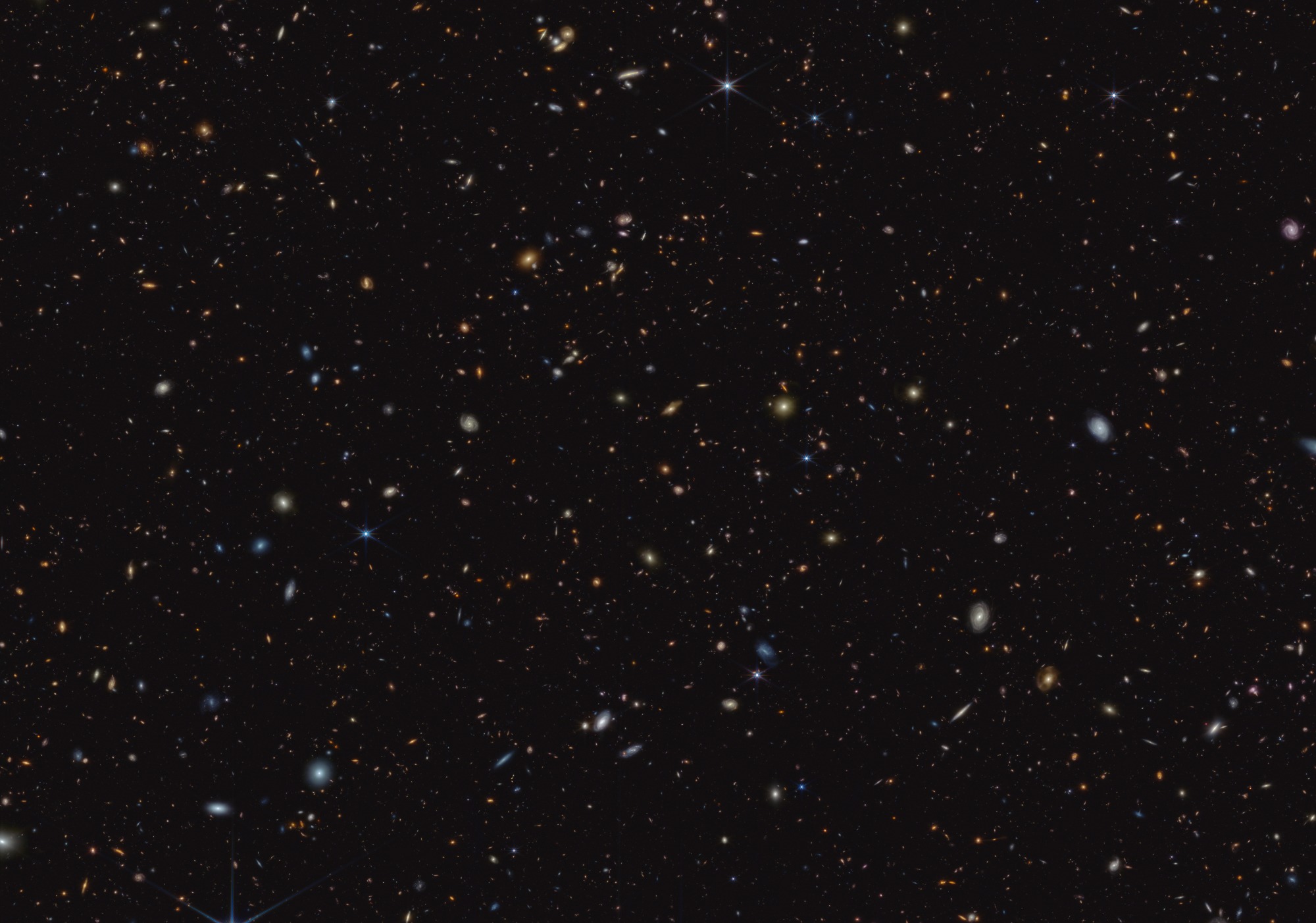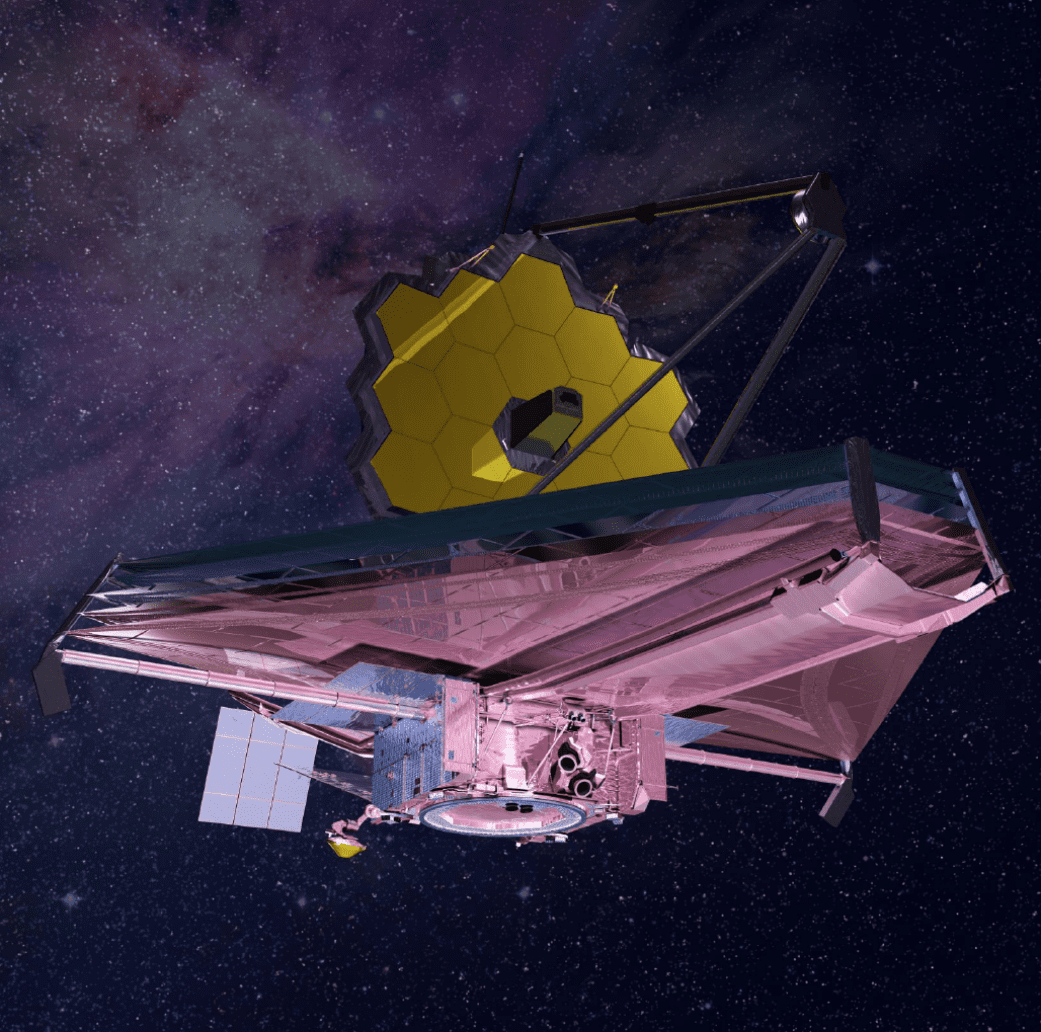The James Webb Space Telescope has received a fresh photo in the infrared range, which shows more than 45 thousand galaxies; many of them existed during the first billion years of the Universe’s existence. The image shows the GOODS-S area, which is located in the direction of the constellation Fornax. It is made as part of the JWST Advanced Deep Extragalactic Survey (JADES) program, which conducts deep space surveys to help scientists unravel the appearance of our Universe.

The GOODS-S field, which was obtained by the James Webb NIRCam instrument from September 29 to October 10, 2022, contained galaxies from the epoch of reionization of the Universe – the period when the first stars and galaxies appeared from the dark fog that preceded them.During the epoch of reionization, the gas structure of the Universe made it opaque to light. Over time, the denser regions of the Universe grouped and folded under the influence of gravity, clearing the cosmos and opening the way to the stars and galaxies that decorate it today.
Many of the light sources in this image are observed as they were when the Universe was young — only 600 million years from the Big Bang. It is now 13.8 billion years old. The image you see is detailed with thousands of galaxies. You can view the full high-resolution version here (image size 12097 x 8482 pixels, 138 MB).
First light from the stars
In addition to the galaxies, data from James Webb showed researchers that a lot of stars were born in this ancient time. “Almost every single galaxy that we are finding shows these unusually strong emission line signatures indicating intense recent star formation. These early galaxies were very good at creating hot, massive stars,” said Ryan Endsley, an astronomer at the University of Texas at Austin who studied these early galaxies.
These hot, massive stars emitted radiation that ionized the surrounding gas and contributed to the reionization of the Universe.

James Webb changed the game in observing and solving the mysteries of the early Universe. By looking at infrared wavelengths, a space telescope can make out the oldest objects to detect the first light of space.
“Previously, the earliest galaxies we could see just looked like little smudges. Now, we can see that some of them are actually extended objects with visible structure. We can see groupings of stars being born only a few hundred million years after the beginning of time,” said Kevin Hainline, an astronomer at the University of Arizona.
James Webb is now approaching the first anniversary of its scientific work. It has already provided a huge amount of data for astronomers and astrophysicists to refine their preliminary understanding of the Universe. It is planned to work for at least another 10 years, and possibly even all 20. We are looking forward to new discoveries from the most expensive instrument of mankind.
Earlier we reported on how James Webb and Chandra joined forces and the result exceeded all expectations.
According to NASA
Follow us on Twitter to get the most interesting space news in time
https://twitter.com/ust_magazine

